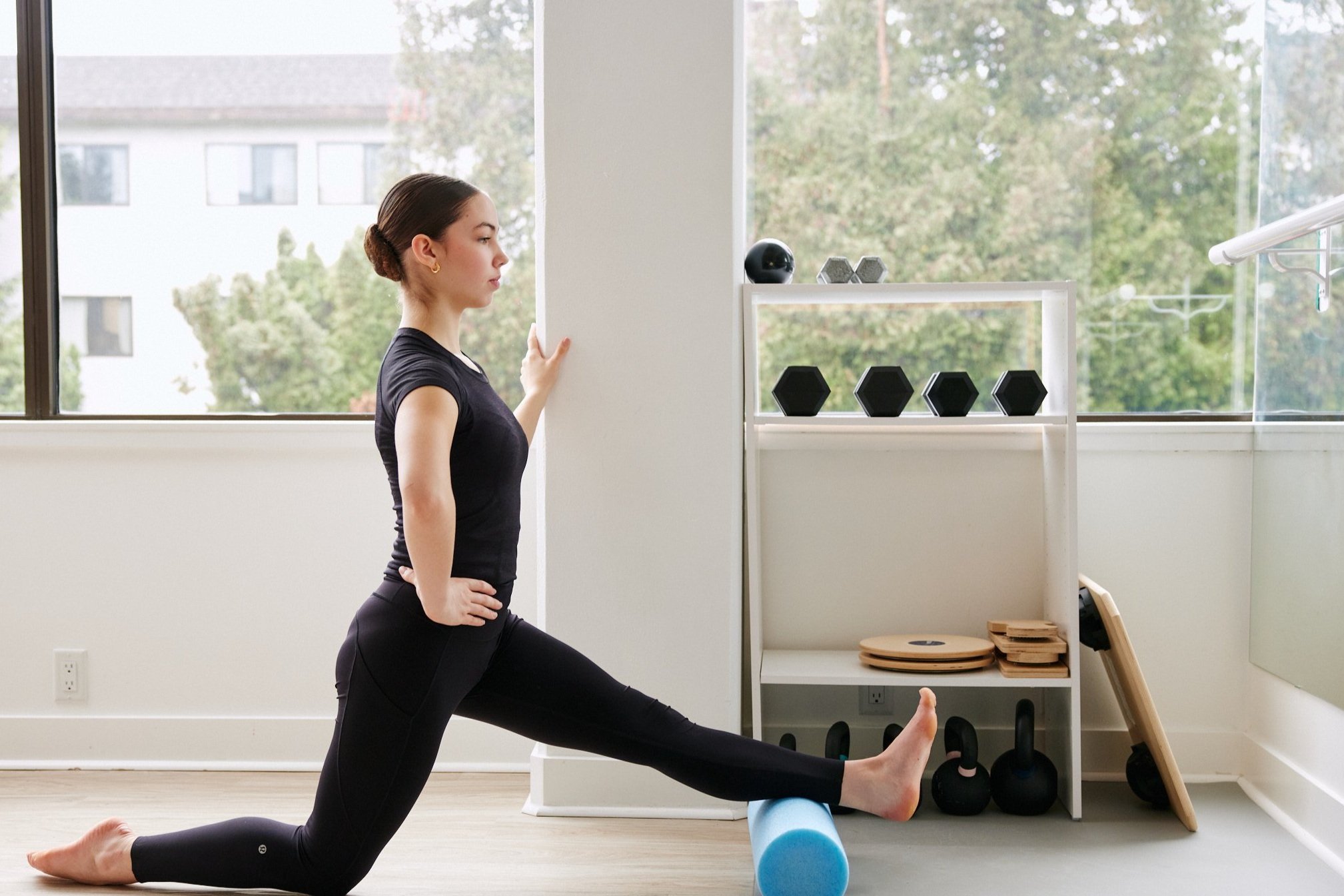
FREE MASTERCLASS
Training Turnout in Dancers
Turnout is one the hallmark features in classical ballet and many other forms of dance - and dancers have long strived to achieve the illusive 180 degrees of ‘perfect turnout’. Although we know 180 degrees is often unrealistic, many dancers still strive to improve their turnout as much as possible - sometimes going to unsafe lengths to do so.
In this masterclass, you’ll learn about the anatomy of turnout, what the most common causes of limitations in turnout are, and how to address these limitations to help your dancers achieve their maximum turnout – safely!
Hosted by Erika Mayall, Physiotherapist
Founder of Allegro Performance + Wellness and host of The Dance Physio Podcast. Erika has over 15 years of clinical experience treating dancers and artistic athletes and is passionate about sharing this knowledge with the dance community.
In this value-packed FREE masterclass recording, you'll learn:
-
The anatomy of turnout and how anatomical factors like the shape of the hip socket and the position of the pelvis will influence a dancer’s ability to access their turnout.
-
Why stretching alone isn’t sufficient to improve a dancer’s turnout. Many dancers have adequate range of motion to achieve their desired turnout, but lack the strength or motor control to be able to fully utilize it.
-
Practical techniques and exercises that you can implement immediately with your dancers to help them maximize their full turnout potential.
A message from Erika…
Over the past 15+ years, I’ve worked with thousands of dancers in the clinic and in studios across the province, and one of the most common goals that these dancers have in common is wanting to improve their turnout.
Although we’re slowly moving away from the unrealistic ideals of achieving 180 degrees of ‘perfect turnout’, the reality is many dancers can and do still need to work on improving their turnout. In the past, this often meant resorting to unsafe stretching practices or forcing the hips and legs into unnatural positions. The good news is that there are safe and effective ways of improving turnout, which don’t involve sitting in froggy positions for hours on end!
As a teacher, knowing the anatomy of turnout and being able to assess what is truly limiting a dancer’s turnout are crucial first steps to being able to help a dancer achieve more turnout - safely!


